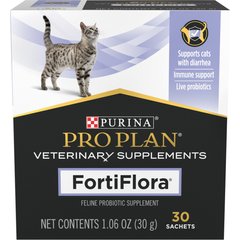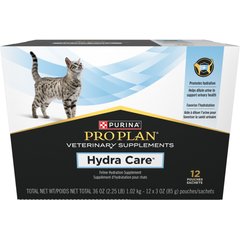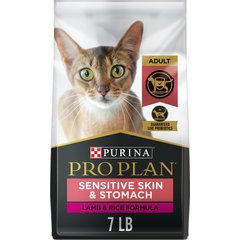Poisoning by Petroleum Products in Cats
Petroleum Hydrocarbon Toxicosis in Cats
When a cat is exposed to refined petroleum oil products, or ingests products of this type, it can result in a severe and disease-like physical reaction, which is referred to as petroleum hydrocarbon toxicosis.
Petroleum products that commonly poison small animals are fuels, solvents, lubricants, and waxes, as well as some pesticides and paints that have a petroleum base. Petroleum products like benzene and turpentine are more likely to be inhaled into the lungs, causing chemical pneumonitis, a life-threatening condition in which the petroleum product spreads all over the surface of the lungs, causing inflammation. Products that have an aromatic, ring-like chemical structure, such as benzene, are most likely to cause systemic toxicity (throughout the body).
Putting petroleum products like gasoline or kerosene on a cat’s skin, or near its mouth, will poison it. Some animals are exposed to these products through exposure to accidental spills, and sometimes people will put gasoline, or other solvents, on a cat to remove something that has gotten onto its skin or hair, such as paint and other sticky substances.
Do not induce vomiting with this type of poisoning, as the substance may do more harm coming back through the esophagus than it did going down. Or, your cat could breath some of the toxin into its lungs, causing aspiration pneumonia.
Dogs are also susceptible to petroleum hydrocarbon toxicosis. If you would like to learn more about how this condition affects dogs, please visit this page in the PetMD health library.
Symptoms and Types
- Pet smells like a petroleum product
- Fever
- Vomiting
- Diarrhea
- Dizziness
- Confusion
- Depression
- Difficulty breathing (i.e., choking, coughing, gagging)
- Abdominal pain
- Blue-purple colored skin/gums
- Excessive salivation
- Pawing at the muzzle
- Champing the jaws
- Head-shaking
- Instability/trouble walking
- Tremors and convulsions (rare)
- Irregular heartbeat
- Respiratory arrest
- Loss of consciousness/comatose
- Loss of all body functions
Vet Recommended Health Support
- Feliway Optimum Enhanced Calming 30 Day Diffuser for Cats$29.99Chewy Price
- Purina Pro Plan Veterinary Diets FortiFlora Powder Probiotic Digestive Supplement for Cats, 30 count$30.99Chewy Price
- Purina Pro Plan Veterinary Diets Hydra Care Liver Flavored Liquid Supplement for Cats, 3-oz pouch, case of 12$14.99Chewy Price
- Purina Pro Plan Adult Sensitive Skin & Stomach Lamb & Rice Formula Dry Cat Food, 7-lb bag$28.08Chewy Price
Causes
- Inhalation, ingestion, direct contact with petroleum hydrocarbons: gasoline, benzenes, kerosene, paint thinner, linseed oil, and turpentine (the last two are not hydrocarbons, but the toxic effect on the body is very similar)
- Toxicity can result from swallowing petroleum hydrocarbons, having petroleum hydrocarbons on the skin, having petroleum hydrocarbons in the fur, or from breathing fumes from petroleum hydrocarbons
Diagnosis
You will need to give a thorough history of your cat's health, including a background history of symptoms, and possible incidents that might have precipitated this condition. The history you provide may give your veterinarian clues as to which organs are being affected by the toxin, as well as to be able to rule out other toxicities, such as ethylene glycol or drug exposure. If you can take a sample of your cat’s vomit to your veterinarian, treatment can possibly be administered with more immediacy.
A complete blood profile will be conducted, including a chemical blood profile, a complete blood count, a urinalysis, and an electrolyte panel. Your veterinarian will test vomit or stomach contents for petroleum distillates. Some cats develop aspiration pneumonia from inhalation of a petroleum product. Your veterinarian will take X-ray images of the chest to look for evidence of inflammation and pneumonia, so that it can be treated immediately.
Treatment
Your veterinarian will give your cat activated charcoal to decontaminate and neutralize the toxin. If your cat ingested the petroleum products recently, a stomach lavage (wash) will also be performed. Causing the cat to vomit is usually not wise under these circumstances, as the cat may contract aspiration pneumonia, a potential and very serious side effect of vomiting.
In all cases of uncomplicated petroleum hydrocarbon ingestion (i.e., not contaminated with some other, more toxic substance), the primary goal is to minimize the risk of aspiration into the cat's lungs. Your veterinarian may give your cat oxygen therapy, depending on the health of its lungs when it arrives at the veterinary hospital. If your cat had petroleum hydrocarbons on its skin or fur, it will be bathed at the hospital, and possibly given topical antibiotics to prevent infection of the skin due to irritation.
Living and Management
Keep all petroleum products and petroleum-based products out of your cat's reach, preferably in a locked or childproof cabinet, to prevent accidental poisoning. If your cat shows any signs of respiratory distress at home after it is released from the hospital, such as an increased breathing rate, panting, coughing, etc., call your veterinarian immediately and take your cat to a veterinary hospital for emergency treatment.



